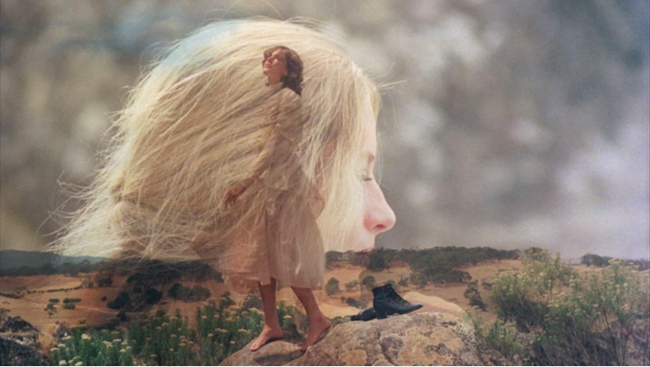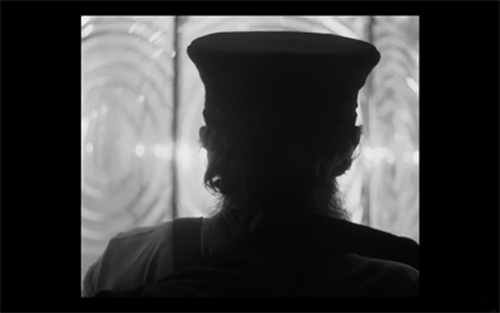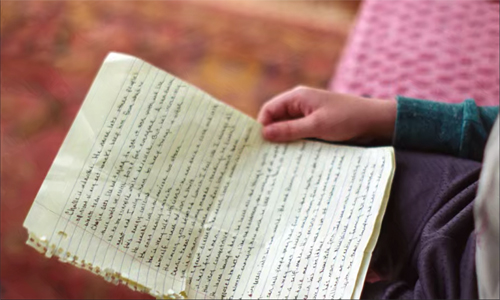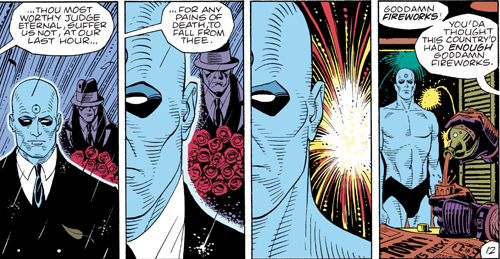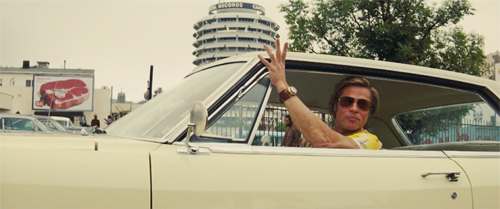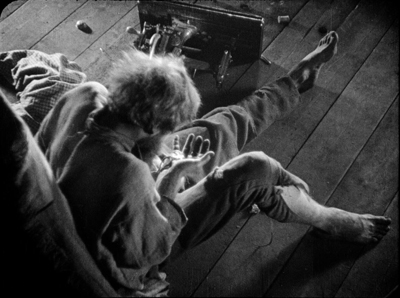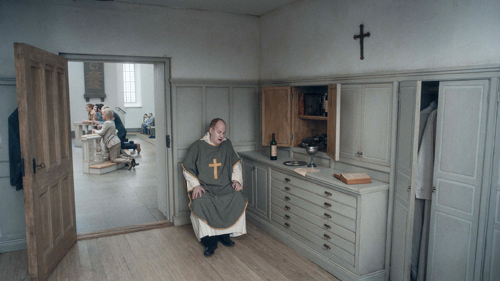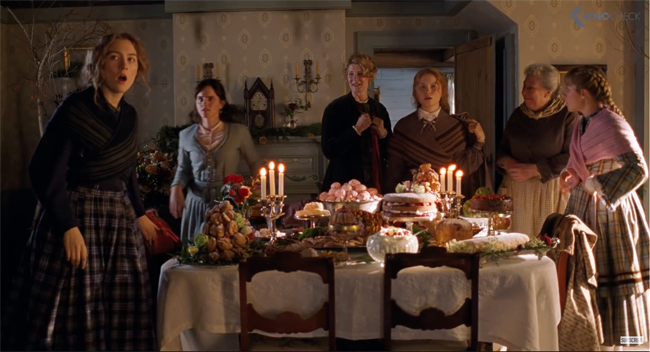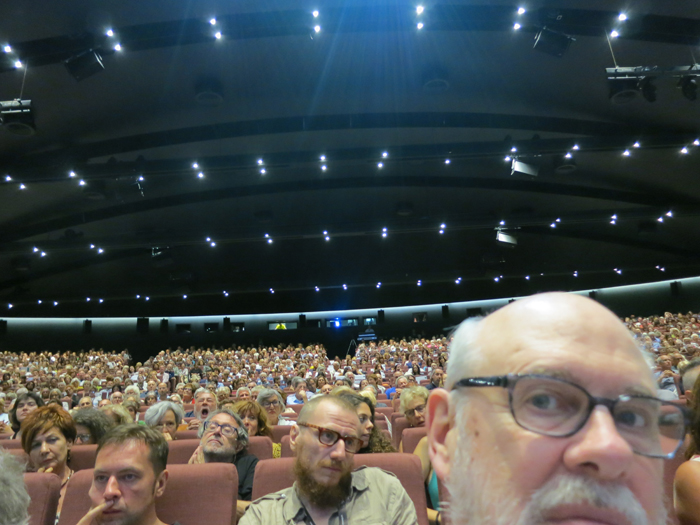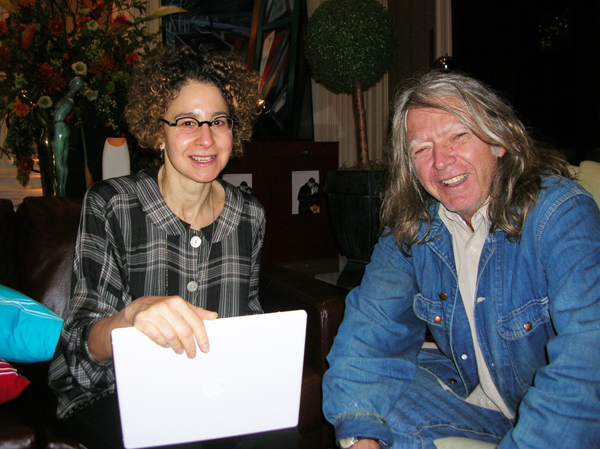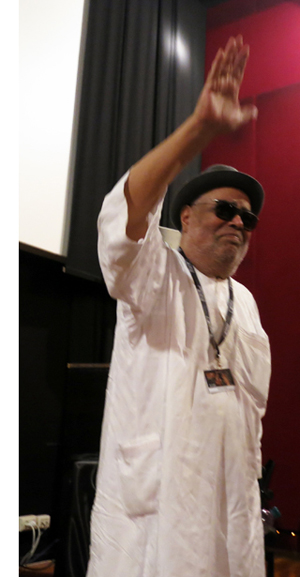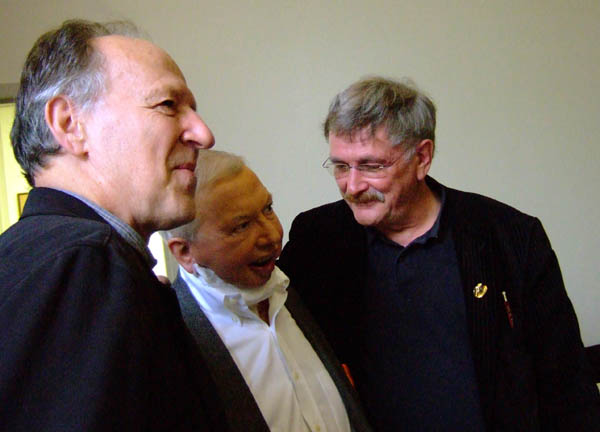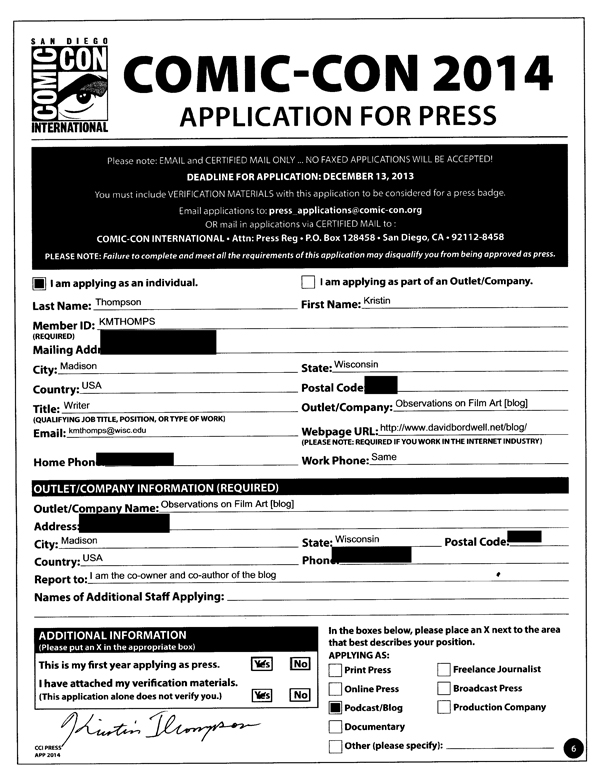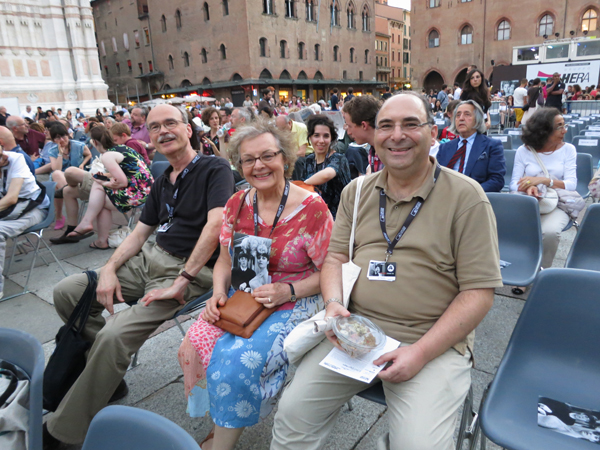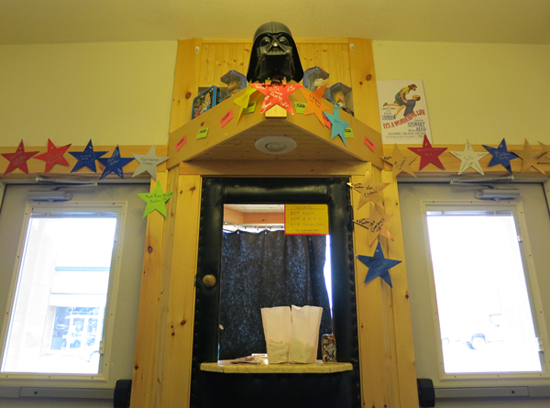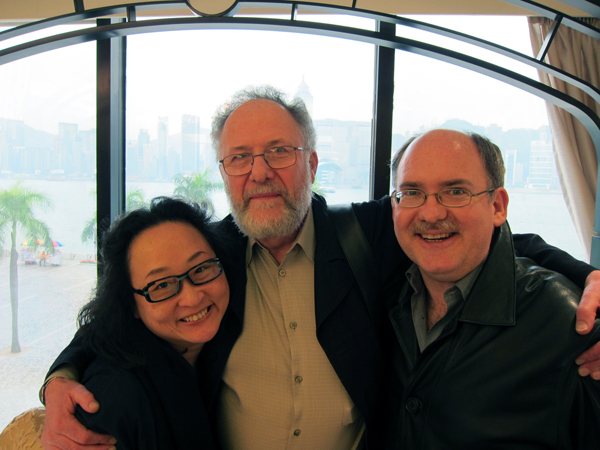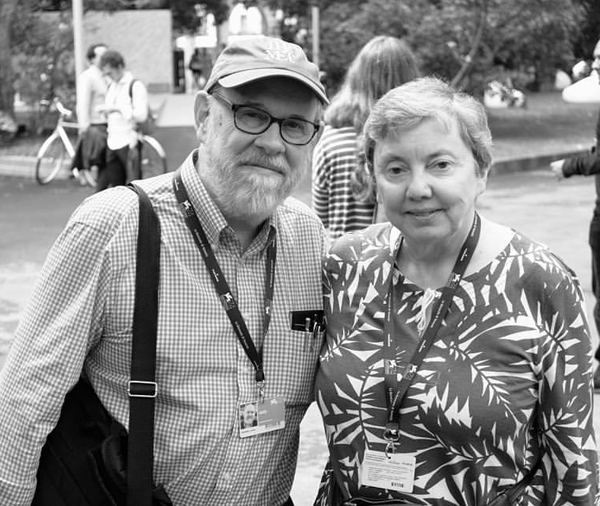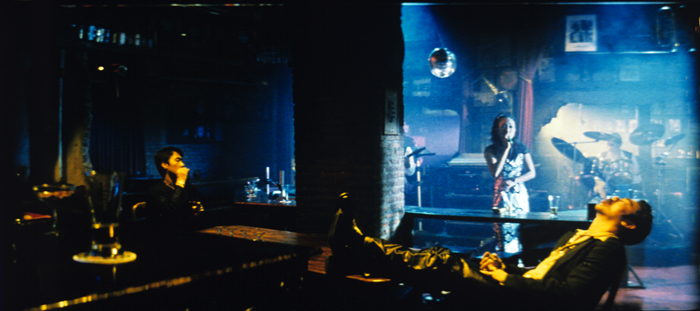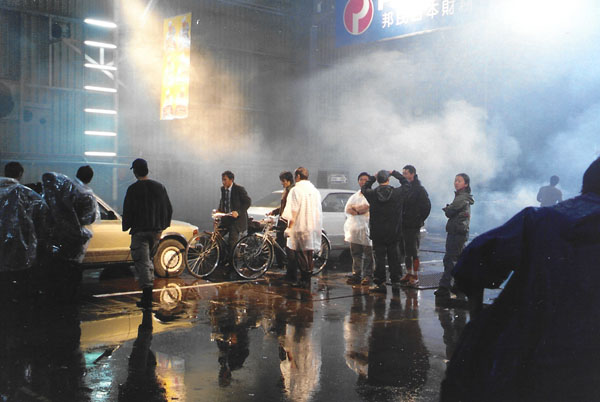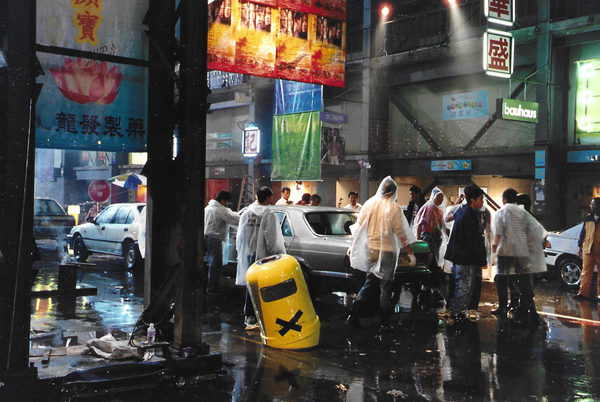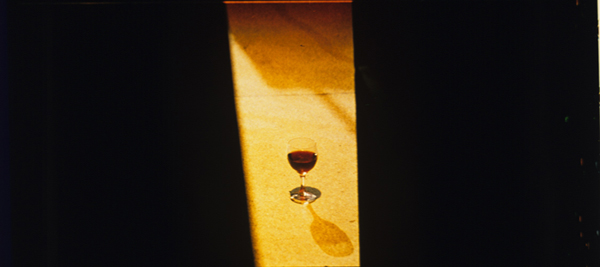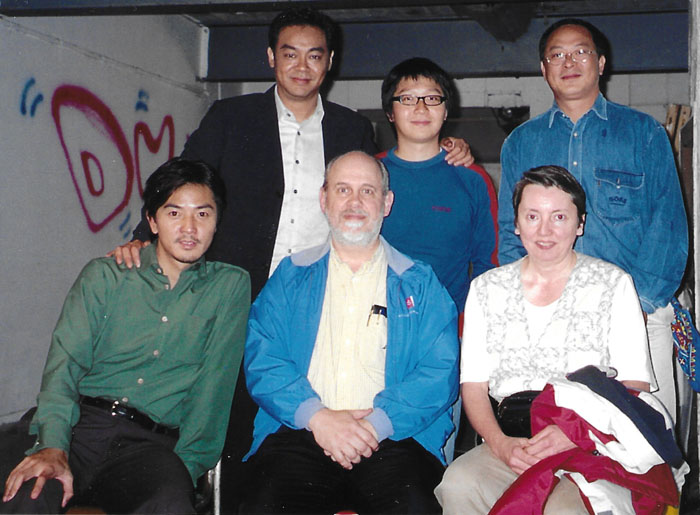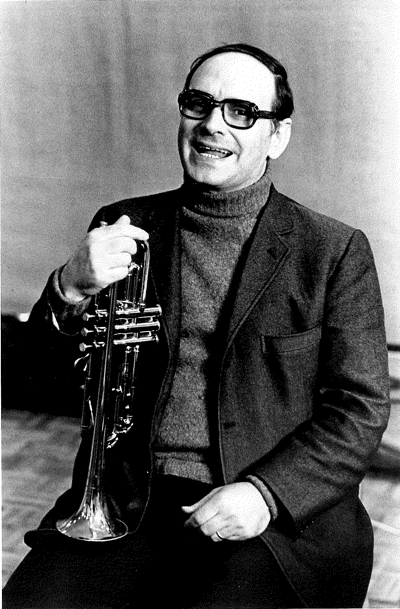
Ennio Morricone holding his principal instrument, the trumpet, in a picture taken in the 1970s. Photo by Roberto Masotti.
DB here: For our blog entry #1001, who better to memorialize Morricone than our stalwart collaborator Jeff Smith? He has provided many music-sensitive analyses of films both recent and classic. Our most popular entries from last year were his two looks (here and here) at the music and musical culture behind Once Upon a Time. . . . in Hollywood. Herewith his warm appreciation of a maestro.
Jeff here:
On July 6, 2020, the legendary composer Ennio Morricone passed away in Rome at the age of 91. As expected, several encomia were published reflecting upon Morricone’s musical genius. Of particular note were reflections by two writers for Variety, film critic Owen Gleiberman and film music historian Jon Burlingame.
The tributes highlighted many notable features of Morricone’s film work: his gift for melody, his sense of humor, his eclecticism, and his amazing productivity. Having written more than 500 film and television scores, Morricone’s compositional output was jaw-dropping. After all, even Josef Haydn wrote only 106 symphonies.
Throughout my own career as a film scholar, I frequently engaged with Morricone’s music. In preparation for the writing of my dissertation, I did an independent study with David on Hollywood film music. My final project? A detailed analysis of the score for Sergio Leone’s The Good, the Bad, and the Ugly, complete with handwritten transcriptions of every musical theme and motif I could identify.
I vividly remember the satisfaction I felt in being able to play the main title from start to finish on the piano. It is one thing to read music and play it. It is another to take what you hear and try to put it in some reproducible form on paper. Playing back Morricone’s famous theme, I felt I’d gained insight into the mind of the great composer. That work eventually became the basis for chapter six in my first book, The Sounds of Commerce.
My fascination with Morricone’s work has continued to the present day. Last summer, I wrote a review of Ennio Morricone: In His Own Words, a book of interviews conducted by Alessandro De Rosa. This past April the Criterion Channel posted my most recent “Observations on Film Art,” which examines musical motifs in Morricone’s score for The Battle of Algiers.
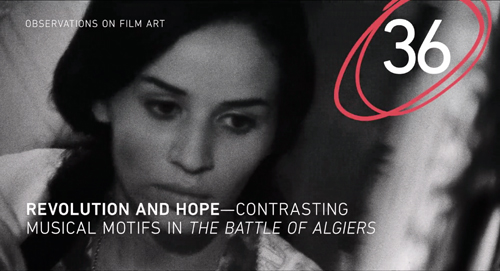
That’s close to thirty years of near-obsessive fascination with Morricone’s music and his compositional style. In what follows, I share some additional thoughts on the Maestro’s legacy, offering some insight on the reasons for his seemingly inexhaustible creativity.
The Sicilian defense
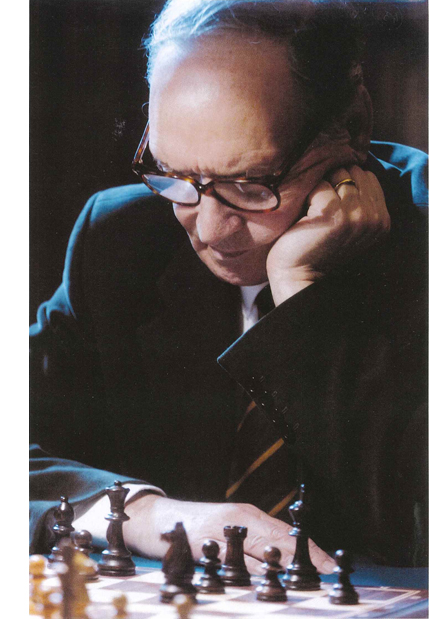
The first section of Ennio Morricone: In His Own Words is all about the maestro’s love of chess. Although the composer would describe himself as a hobbyist, his chess skills surpassed those of most amateurs. Morricone played against Boris Spassky, Garry Kasparov, and other Grand Masters. When asked about his passion for the game, Morricone explains that he sees important parallels between music composition and chess. Both activities involve mathematical relations. These relations are further expressed in axes of verticality, horizontality, and graphics.
This initial discussion of chess struck me as a key to understanding Morricone’s creative process. The game of chess is often analogized as a battle where stratagems and tactics are deployed in an effort to outmaneuver – and thus, defeat – one’s opponent. That comparison undoubtedly rings true. Yet when one looks at the board before the game starts, it also represents something simpler: a field of open possibilities. Not every move is permissible, of course. But when you consider possible combinations of moves, the permutations can number in the millions. And even though the rules of chess constrain the patterns of moves that can be made, all of these possibilities are generated by the dispositions of up to 32 pieces on a field of 64 squares.
Morricone seems to approach the blank space of staff paper as though it were a chessboard at the start of the game. A chess player works with sixteen pieces that can be used in various combinations. A composer works with the twelve tones of the chromatic scale to create intervals and chords. As with the chessboard, there are millions of different permutations in the way these twelve tones can be arranged. More importantly, since each note in the scale can be varied by pitch class, duration, articulation, dynamics, and instrumental color, the options seem endless.
Yet while the “terror of the white page” can be an obstacle to the creative process, that has never appeared to be the case with Morricone. Why? I think it is because the composer found a method of composition that reduced the apparently infinite possibilities to the level of the merely multitudinous.
In Ennio Morricone: In His Own Words, the composer characterized himself as a student of the Second School of Vienna. Unlike Arnold Schoenberg and Anton Webern, who were part of the first Viennese School, Morricone tried to transpose the former’s twelve-tone technique into a seven-tone system while retaining the latter’s commitment to the rules of serialism that ordered all other musical parameters. For Morricone, this system had the advantage of enabling him to write tonal music without having to slavishly adhere to its characteristic tensions and resolutions. By adopting Webern’s principles of serialism, the notes, according to Morricone, “are freed from their reciprocal constraints.”
Over time, Morricone learned how to adapt this simplified version of twelve-tone serialism to the needs of each film score he wrote. In some cases, he would work within a pentatonic system. In others, he might base his compositions on a row of six or eight tones. In still others, he might jettison the system altogether.
This simplified serial technique provided Morricone with a compositional framework that was extraordinarily generative. Once the composer has determined the tone row and the ordering of other musical parameters, he simply spins off hundreds of variations that are then fitted to the film’s dramatic situations. The smaller tone row still acts as a guarantor of harmonic unity. Morricone describes it as the music’s DNA, something like an identifying marker in every musical “cell.” Specific changes in rhythm, tempo, orchestration, volume, and tessitura all provide means of refreshing the basic musical schema.
Indeed, Morricone’s compositional system proved so procreant that he sometimes wrote three or four versions of a score’s theme in order to give the director some options to choose from. In Ennio Morricone: In His Own Words, he offers an example with the police triumph theme in The Untouchables. The theme was the last one written for the score, and Morricone prepared three pieces that were recorded with two pianists. He then sent them off for director Brian De Palma’s consideration. De Palma didn’t like any of them. Back to the drawing board,
Morricone wrote three more pieces and shared them with De Palma. In a phone call, the director told Morricone that he still wasn’t convinced. Morricone completed three additional pieces and sent them. This time, though, he included a brief that summarized the strengths and weaknesses of all nine proposals. Morricone himself recommended against variant number six, claiming it was most triumphant and therefore the least convincing. Concluding his story, Morricone asks, “Guess which one he chose?”
After I sniggered at the composer’s dig at De Palma’s musical sensibilities, the larger implications of Morricone’s anecdote began to sink in. My mind was well and truly blown. If Morricone had written eight other themes in lieu of the one that was ultimately chosen, how much music had he actually written for The Untouchables? And if this, as Morricone indicates, was not an isolated case, how many unused cues are likely sitting in boxes somewhere in Rome simply waiting to be discovered? As noted earlier, Morricone had written music for more than five hundred films and television shows. Were the aggregated number of unused cues and alternate versions of themes the equivalent of another one or two hundred scores? And if we trust Morricone’s judgment, some of these versions are actually better than the ones we already know.
All of this is a reminder that Morricone’s output is astonishing. This is evident both in terms of the size of his corpus and the sustained quality of his work over a period of almost sixty years.
Much of that productivity, I think, was fueled by Morricone’s transposition of serialist concepts to the film score. Like the rules of chess, which prohibit certain moves, Morricone’s use of simplified tone rows gave him a set of “rules” that fruitfully limited certain options in terms of melody and harmony, but still preserved the usual range of choices for other musical parameters. It also shaped our sense of Morricone’s style by favoring certain compositional devices over others. Pedal points and ostinati are completely permissible in Morricone’s system. But a rapid chromatic run of the type used in classical Hollywood “hurries” would be out of bounds.
Such a rapid chromatic run is also ill-suited to Morricone’s aesthetic for another reason; it is a musical gesture that implies directional movement. Instead Morricone strives to produce a sensation of “dynamic immobility” in his work, the musical equivalent of the swirls, eddies, and ripples we associate with lake water. The sense of immobility derives from Morricone’s interest in writing tonal music outside of the strict rules governing the Western tonal system. One hears chord changes. But you couldn’t describe any particular change as a modulation insofar as there is no definite key to ground these harmonic relations. Consequently, you discern harmonic change, but without the sense of teleological movement toward a cadence as a definite endpoint.
If Morricone’s approach to harmony strives for a feeling of moving stasis, what then accounts for the music’s dynamism? For Morricone, it is the constant change evident in the other musical parameters: texture, pitch, dynamics, and timbre.
Listen again to the cue from The Untouchables. Do you notice the sorts of surges and swells produced by its chord changes? Does it sound like it moves to a definite endpoint? Or does one instead get the feeling of an endlessly deferred resolution? If those surges and swells produce the latter, that’s Morricone’s “dynamic immobility” in situ.
Morricone’s creative spark seems all the more remarkable when one considers that he worked in a production environment guided by the notion that “I don’t need it good; I need it Tuesday.” That Morricone flourished within this milieu for more than five decades eventually made him “untouchable.”
Roll over Beethoven and tell Tchaikovsky the news
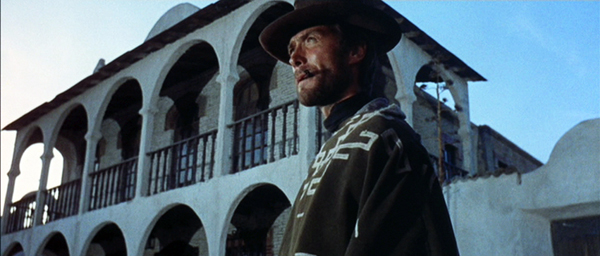
A Fistful of Dollars (1964).
In The Sounds of Commerce, I argued that the 1960s proved to be an important period in the history of the Hollywood film score as the dominance of its neoromantic style began to wane. Driven partly by the popularity of theme songs and soundtrack albums, composers infused the classical Hollywood score with elements of both jazz and pop music. To be sure, those styles all had their place in Hollywood films. Characters performed Tin Pan Alley songs in musicals. Dance bands played jazz as part of the nightlife featured in gangster films and films noirs. And one even heard the occasional bit of Gershwin-style orchestral jazz pop up in a score. The changes I discerned in sixties film scores were more a matter of degree than of kind.
What prompted the change? Besides the emergence of new ancillary markets for film music, Hollywood also saw a generational shift take place throughout the industry, including film composers. Sadly, some of the greatest proponents of the classical Hollywood style, such as Herbert Stothart, Erich Wolfgang Korngold, and Victor Young, were dead before 1960. Others, like Roy Webb, Max Steiner, and Miklós Rózsa, remained active, but they saw fewer assignments come their way.
Taking their place was a new breed more attuned to changes in the jazz and pop idioms. Instead of aping Gershwin, these new composers were more likely to draw upon swing music or West Coast jazz. Similarly, several film composers also began to incorporate elements of pop music’s newest sensation: rock and roll. In an interview I did with Henry Mancini, he described his famous “Peter Gunn” theme as a rock tune due to its “straight eight” rhythms and its twangy guitar line. Not coincidentally, John Barry’s arrangement of the James Bond theme foregrounded Vic Flick’s guitar in a similar way. The middle section of the tune features a swinging, Dizzy Gillespie-ish break. But that guitar sound stood out, much closer to Carl Perkins than to Wes Montgomery.
During the 1960s, no film composer was as thoroughly steeped in the rock idiom as Ennio Morricone. Yet, unlike Mancini and Barry, who were drawn toward rockabilly in their use of electric guitar, Morricone cribbed from the slightly more modern sounds of early sixties surf-rock. Morricone tells Alessandro De Rosa that he used the electric guitar long before he wrote the scores of his spaghetti Westerns, albeit not as a solo instrument. Yet he opted to feature the electric guitar in the main theme of A Fistful of Dollars because he liked “its tough and sharp timbre,” which he felt was perfect for the atmosphere of the film.
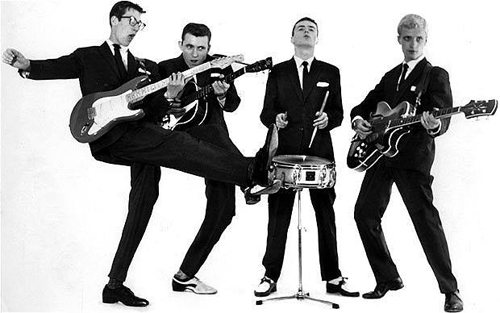
De Rosa also notes that the Shadows’ surf music was extremely popular on Italian record charts in the early sixties, especially their Western-themed classic “Apache.” The distinctive twang of Hank Marvin’s Fender Stratocaster was widely imitated by Italian beat bands. By the time A Fistful of Dollars was in production, the Shadows’ influence had seeped into Italian popular music culture. When they topped the Italian charts in 1963 with “Geronimo,” another paean to the American west, it probably seemed quite natural to make the Stratocaster’s sound the centerpiece of Leone’s groundbreaking film.
Morricone made the electric guitar the star of many more spaghetti Western scores. But none so prominently as the “Man With the Harmonica” theme of Once Upon a Time in the West. Famously, the film features no main title in the opening credits, “scoring” the scene instead with the sounds of the wind, a creaking mill, the clanging of a metal gate, and an especially persistent horsefly (among other things). Morricone’s score doesn’t come into Leone’s film until about the twenty-minute mark. But when it does it makes quite an entrance.
Frank and his gang have just slaughtered the McBain family. The only survivor is a red-headed boy who comes running out of the house after hearing gunshots. As he comes into a close-up, Bruno Battisti D’Amario’s guitar starts blasting through the theater speakers. The sound is loud and distorted, cutting through the silence like an axe through a chicken’s neck.
In his instructions to D’Amario, Morricone insisted that the theme was meant to “wound the audience’s ears like a blade” the first time we hear it. As a coup de théâtre, it is brutally effective. I’ve seen it more than twenty times, and the moment never fails to give me chills. Here we see Morricone experimenting with the timbre of the guitar by heightening the effects of high volume and high voltage to overdrive the power valves of the amplifier. The effect was such that some critics even described Morricone’s score for Once Upon a Time in the West as a sort of “post-Hendrix” rock. The comparison was undoubtedly flattering. No musician had done more to explore the timbral possibilities of the electric guitar than Jimi Hendrix.
Morricone experimented in other ways that seemed to merge elements of avant-garde classical music with more vernacular forms. Consider his “Harmonica” motif in Once Upon a Time in the West alongside Henry Mancini’s main title for Wait Until Dark, which was released about a year before Leone’s epic. Both film scores explore microtonal effects, albeit in quite different ways.
In Mancini’s case, he asked the studio to give him two pianos that were tuned a quarter tone apart. He then asked his two performers to play the chords of an accompaniment figure in rapid succession.
The dissonance produced through this effect is unlike any produced in atonal writing. There the composer deliberately emphasizes intervals that create a sense of disharmony, such as minor seconds, major sevenths, and tritones. Yet Mancini’s microtonal experiment does something else entirely. Our ears tell us we should be hearing the same chord, but the repetition on the detuned pianos sounds a bit off. Mancini’s score evokes a kind of dislocation well suited to Wait Until Dark’s generic trappings as a psychological thriller. The effects, though, were even more pronounced for the two pianists who played on the main title. Pearl Kaufman and Jimmy Rowles both reported having to take frequent breaks during the recording sessions. The sort of “swimming” effect produced by the detuned pianos gave them a feeling of vertigo and nausea commonly found in motion sickness.
Morricone’s approach to microtonal harmonies proves to be much more elemental: the wavering sounds of two notes played on the harmonica, ostensibly a half step apart. Anyone who has played a harmonica knows it requires great breath control. Inhale and you make one pitch. Exhale and you make another. Beyond that, skilled performers can also bend pitch on a harmonica by changing their embouchure. Harmonica players can also use their hands as dampers, altering the sound in much the same way a wah-wah mute alters the tone of a trumpet.
All of these techniques give the harmonica player a number of means to bend pitch. Morricone takes full advantage of them with the “Harmonica” motif in Once Upon a Time in the West.
Listening to this passage, one can hear how Franco De Gemini’s mouth harp straddles the fence between sounding bluesy and sounding strident. Morricone viewed the half-step relation in the motif as a key element in building musical tension since it is heard in the flashback that explains Harmonica’s life-long quest for revenge. Yet De Gemini’s subtly wavering pitch seems to capture the full range of microinterval variants that fall between the D# and E that comprise the last two notes of the motif.
Both composers’ explorations of microtonal effects prove effective. But the precision of the quarter tone difference in Mancini’s detuned pianos gives the music a mechanistic quality that seems cold and brittle. By contrast, the harmonica’s fluid pitch-bending in Once Upon a Time in the West is looser, freer, more improvisatory – all of which fits the types of vernacular music played on harmonica.
This effect was enhanced by Morricone’s recording techniques. He first recorded the orchestra and then recorded De Gemini’s harmonic track individually. Although the latter recording was less precise, Morricone said that “the tension generated by the performance made his harmonica float over the orchestra. Now on the beat, then behind it, this time ahead….in short, it was almost as though it was fluctuating.”
Morricone’s compositional and recording techniques in Once Upon a Time in the West might seem less daring than Mancini’s more avant-garde experiment in Wait Until Dark. Yet Morricone’s music gains something in its more organic placement within Leone’s film. The harmonica’s wavering pitch is akin to the sorts of portamenti and string-bending frequently heard from saxophones, guitars, and basses in a multitude of rock and roll songs produced throughout the idiom’s history. And the harmonica as an object has long been a common feature of the Western’s iconography. In this way, Morricone’s experimentation is grounded in the dramatic, stylistic, and symbolic structures of Leone’s epic.
A horse of a different tone color

The Good, the Bad, and the Ugly (1966).
Unquestionably, Morricone’s most audible innovations came through his approach to orchestration. As nearly every obituary noted, his unusual combinations of instruments became a hallmark of the Morricone sound. In a summary of the signature elements found in the score for The Good, the Bad, and the Ugly, The Economist declared:
And then there is the freewheeling range of sounds with which he chose to make that music: the whistling, the yodeling, the gunfire and the squeaky ocarina, an ancient Italian wind instrument that looks like a sweet potato and is better known to a younger generation as the soundtrack of a Nintendo video game.
As I suggested above, Morricone was part of a cohort that moved outside the neo-Romantic style of film composition associated with the studio era. Unconventional orchestrations were an important part of that push.
Several factors provided impetus for this change. One was the embrace of jazz and pop styles. Incorporating those elements often meant writing for the instruments typically associated with those idioms. Mancini, John Barry, Frank De Vol, and Nelson Riddle all were prominent exponents of this approach during the 1960s. Indeed, many of Mancini’s orchestrations simply add strings to the usual forces of a jazz big band.
A second factor was the breakdown of the studio system in the 1950s. The majors’ retrenchment saw them making fewer films and reducing their overhead costs. They sold off parts of their backlots and leased their soundstages to independent producers or television crews. They also tried to shed labor costs, including those associated with maintaining an in-house orchestra.
This was bad news for musicians, who suddenly found themselves working in a gig economy as independent contractors. But it was good news for composers who now could write music for something other than a standard chamber orchestra. (During the Golden Age, studio bosses would sometimes chafe at the notion of hiring extra musicians, since they were already keeping as many as fifty regularly on call.)
With more flexible options when it came to musical labor, composers began to experiment with more unusual combinations. Whereas the typical studio orchestra employed one or two keyboardists, Bernard Herrmann arranged one cue in Journey to the Center of the Earth for nine organs. Three organists played electronic organs and one played a cathedral organ.
In many ways, Herrmann’s experiments with orchestration provide an interesting foil for Morricone’s own flights of fancy. For two of the scores Herrmann wrote for Alfred Hitchcock, he self-consciously limited his palette to the sounds of a single section of the orchestra. On Psycho, Herrmann wrote only for strings, claiming that the more monochrome sound was fitting for a black and white film. Yet, within that uniformity, Herrmann wrought an extraordinary range of subtle differences in timbre through the use of pizzicato, mutes, and unusual bowing techniques. The famous bird shrieks produced by the violins during the shower murder recall the avant-primitivism of Stravinsky’s Rite of Spring. But Herrmann achieved this effect only with strings rather than a full orchestra.
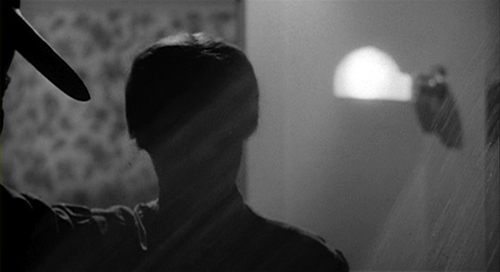
Herrmann did something similar in his unused score for Torn Curtain, which was written for sixteen French horns, nine trombones, two tubas, twelve flutes, two sets of timpani, eight cellos, and eight basses. For Torn Curtain, Herrmann’s restriction of his palette was inspired by the setting rather than the cinematography. By emphasizing the low brass and lower-pitched strings, the composer sought to find a sonic equivalent to the drab cheerlessness of life behind the Iron Curtain. Alas, Hitchcock rejected the score under pressure from Universal to produce a saleable music tie-in. The studio wanted something like the Beatles. What they got from Herrmann was more like John Philip Sousa on an acid trip.
If Herrmann’s orchestrations were the musical equivalent of a Mark Rothko painting, exploring a range of subtle shadings within a single color, Morricone’s were closer to the collage principles of Robert Rauschenberg. Just as Rauschenberg’s work juxtaposed unconventional materials and objects within a single canvas, Morricone enjoyed the wild, discordant collisions that could come by combining oddball instruments with one another. The composer is often described as a postmodernist because of his “everything but the kitchen sink” approach to orchestration. No doubt this is one of the reasons his work was so appealing to “downtown” musical avant-gardists like John Zorn.
Consider, for example, the way Morricone uses vocal textures throughout his score for The Good, the Bad, and the Ugly. It features Edda Dell’Orso’s gorgeous soprano, natch. But it also features a variety of other vocal sounds, some of which border on the “unmusical.” These include the famous “coyote incipit” that has become something of a meme for the spaghetti Western more generally.
There are also plenty of other chants, grunts, and yelps that add their flavors to the musical stew. Morricone even had his singers vocalize through various trumpet mutes to produce the “wah-wah-wah” that is a motivic counterpart to the coyote incipit.
Morricone also made marvelous use of library effects to incorporate the sonic iconography of the Western into his score. We hear gunfire, whipcracks, and ricocheting bullets as elements of rhythmic punctuation throughout the music of The Good, the Bad, and the Ugly. (Since cowboy yells and whipcracks both appear in the opening theme of Rawhide, perhaps both of these tactics are a sly reference to star Clint Eastwood’s television career.) Even these audacious touches are supplemented by simple, but effective solutions to musical problems. In need of a rhythmic pulse underneath the melody, Morricone coaxed Bruno D’Amario to tap the pickup on his electric guitar.
All of this suggests something very Cagean in Morricone’s approach to orchestration. It is though he took the idea of Cage’s “prepared piano” in which different objects could be laid on the strings of piano’s soundboard, and applied it to the full orchestra.
What is the sound of one wing flapping?

The Mission (1986).
Although Morricone’s spaghetti Western scores displayed his boldest experiments in orchestration, his interest in unusual sonorities continued throughout his career. Some choices are a bit more conventional than others. But they always strike me as inherently right. The oboe seems like a fairly idiosyncratic instrument for an 18th-century Jesuit missionary. Surprisingly, though, its melancholic yet dulcet melismas are a perfect complement to the big sound of The Mission’s double chorus, the latter itself inspired by the luminous sacred music of Palestrina.
Or think of Morricone’s use of the panpipe. He seems attracted to its airy timbre, using it in several scores throughout his career. Yet, comparing its appearance in both Once Upon a Time in America and Casualties of War shows that the panpipe’s sound resists any easy associations. In Leone’s gangster epic, the panpipe is introduced in “Cockeye’s Theme” in a scene where Noodles buys a one-way ticket to Buffalo. After completing his purchase, his attention is drawn to a large poster encouraging tourists to visit Coney Island. The music suggests Noodles’ memories of childhood and his grief after hearing the news that his three childhood friends all died in a battle with federal agents.
It comes back, though, at the moment when Dominic is killed by Bugsy, a rival gang member. As Morricone noted, Leone identified this scene “as a definite point of no return in the story, the watershed marking the end of youth.”
In contrast, for De Palma’s combat film, Morricone used two panpipes in the theme he wrote for the young Vietnamese woman who is abducted, raped, and killed by US soldiers. Here the motivation was something that struck Morricone in the staging of her death.
She buckles her legs like a dying bird, before tumbling down from the high ground. I imagined a theme based on just a few notes for two panpipes, which by ping-ponging their sound, evoke the slowing fluttering of a bird’s wings shortly before death.
At first blush, Morricone’s description of the scene sounds like “Mickey-Mousing” where the music accents a character’s actions, movements, or gestures. But what Morricone actually gives us turns out to be much more sophisticated. A classical Hollywood composer like Max Steiner might have caught the girl’s collapse through a downward glissando or a rapid, descending scale run. Instead Morricone gives us a different musical gesture – the alternation of two notes on the panpipe – to suggest an action not visible onscreen: a dying bird’s fluttering wings.
As is evident in the clip, we hear the two panpipes play over the image of the young woman’s broken body. Yet Morricone associatively links it to the birdlike movement seen about a minute earlier: the buckling of her knees as she falls.
A moment such as this one nicely captures Morricone’s gift for storytelling. Many of Morricone’s fans treat his scores as absolute music, often listening to them repeatedly without ever watching the films they accompany. But Morricone also had a gift for translating a film’s larger themes and meanings into musical forms.
Morricone achieved fame for his beautiful melodies, rich harmonies, and surprising orchestrations. None of that would be very meaningful, though, if these elements weren’t firmly rooted in the composer’s extraordinary dramatic sense.
The greatest?

The Hateful Eight (2015).
At the end of Ennio Morricone: In His Own Words, Alessandro De Rosa asks the composer if there was a specific moment when he realized he’d become one of the greatest, most influential composers of the century. Morricone gets flustered by the question, claiming such judgments are premature. In music, it takes hundreds of years to determine whether one’s work endures. He then adds a polite, but banal conclusion, saying it is wonderful to be appreciated and even better to have one’s music reach so many people.
Still disarmed by the question, Morricone continues hesitatingly:
The greatest of the century? It is difficult to reply….Oh dear…. where did you hear this?
De Rosa responds, “It was just to provoke your vanity…” Acknowledging the trap set before him, Morricone smiles and replies, “You don’t say….I figured!”
Morricone’s humility might be a tacit recognition that he’s had the great fortune to write music for the movies–one of the greatest engines for pleasure that the world has ever seen. A great film surely benefits from a great score. Yet it can seem that the composer is just along for the ride.
Still, Morricone understood that his music was often better than the films it accompanied. As he well knew, fortune gives with one hand and takes with the other. Morricone wrote music for masterpieces like Days of Heaven. He also worked on schlockfests like The Exorcist II: The Heretic.
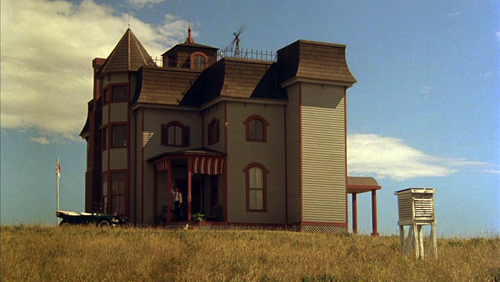
Perhaps more than other craft positions, the lot of a film composer can seem unique. Music exists as its own formal system. But film scores are always written in the service of something else and judged accordingly. Directors often hope in vain that a composer can salvage a bad scene. Yet composers themselves will say they’re not miracle workers. And even when the score can stand on its own, some pugnacious critic will ask, “Should it?”
When I was doing the initial research for my dissertation during the early nineties, I recall some film music critics dividing the field into craft workers and stylists. The paradigm case for the former was a composer like Jerry Goldsmith, who subordinated his personality to the dramatic requirements of the work. Goldsmith could write a bittersweet jazz melody for Chinatown, a stirring horn call for the war epic Patton, cartoonish “Mickey-mousing” for the comic fantasy Gremlins, and outré dodecaphonic themes for sci-fi adventures like Planet of the Apes and Alien. Binge-watch all five films and it would seem hard to believe the music was all the work of a single person.
Stylists, on the other hand, were composers who had created such a distinctive sound that their music could not be mistaken for that of another. All three of the composers featured in my book seemed to fit that rubric – Henry Mancini, John Barry, and Ennio Morricone – a factor that likely contributed to the popularity of their scores in ancillary markets.
Looking back almost thirty years later, the label of stylist fits the work of Mancini and Barry quite well. In fact, I have anecdotal proof of the latter in my first viewing of Michael Apted’s espionage thriller Enigma. Halfway through film, I wondered to myself who had written the score since it sounded a lot like John Barry. Checking the poster afterward, my hunch was confirmed; it was John Barry!
For Morricone, though, the “stylist” label seems misapplied. At the time, this was due to the fact that he was so strongly associated with the spaghetti Western. He had written music for more than thirty films in the cycle and had come to define it in the public imagination. It is telling that the scores written for other spaghetti Westerns by Luis Bacalov or Riz Ortolani sound like Morricone facsimiles.
Identifying Morricone so closely with the spaghetti Western, though, ignores the inspired music he wrote for so many other genres: horror films, gangster films, thrillers, historical epics, political satires, and even the occasional romantic drama.
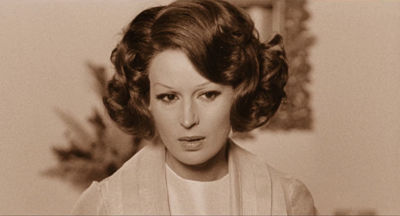
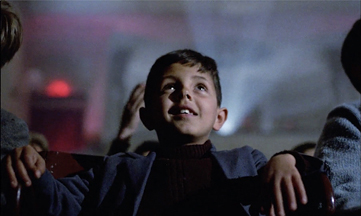
Take five Morricone classics not so randomly selected: Teorema, Investigation of a Citizen Above Suspicion, Cinema Paradiso, Tie Me Up! Tie Me Down!, and The Hateful Eight. Could any other composer have written the notes that we hear? Probably not. They all seem to bear the distinctive Morricone signature. Yet they are also so unlike one another that it seems unfair to suggest that he didn’t mold his sound to the specific needs of each film. For Morricone, we have to throw out the “either/or” implied by the rubric. He’s both a craft worker and a stylist.
If that seems like a copout on my part, it’s one I will happily embrace. For me, like many others evaluating Morricone’s legacy after his death, his music is both cerebral and visceral. It warms the heart and tickles the brain, sometimes simultaneously. And that seems rare for much 20th-century concert music, which even at its best, can feel quite cold and analytical.
Thirty years later, Morricone’s music still enthralls me in a way that’s unlike that of any other film composer, especially when the score is heard coming from the big screen. I’ve had the great pleasure of screening a 35mm print of The Untouchables the past two years. Hearing Morricone’s main title played back in Dolby Stereo with a proper subwoofer, I still get goosebumps. I even anticipate the massive bass drum hit that punctuates the rhythms played by brushes on the snare. If the stinging guitar chord that introduces Frank was intended to sound like a stab, that bass drum sound is the musical equivalent of a gut-punch.
Ciao, Maestro! You will be missed. Yet your music will live on, perhaps even for centuries. For my part, you’ve given me hundreds of joyful moments at the cinema and a lifetime of wonderful memories.
Ennio Morricone: In His Own Words can be found here. If you want to learn more about his music, this is a great place to start. It includes reproductions of Morricone’s handwritten musical notation. It also includes a thorough survey of both Morricone’s film scores and his concert works.
My review of Ennio Morricone: In His Own Words is here. A brief discussion of Morricone’s score for The Hateful Eight can be found in my 2016 Oscar preview. Incidentally, Tarantino used Bernard Herrmann’s rejected score for Torn Curtain for the excerpt from Rick Dalton’s action film The 14 Fists of McCluskey in Once Upon a Time . . . in Hollywood. The cue can be found here and the scene from Tarantino’s film is here.
My chapter on Morricone’s spaghetti Western scores can be found in The Sounds of Commerce.
Henry Mancini discusses his score for Wait Until Dark in his autobiography, Did They Mention the Music? Bernard Herrmann’s score for Psycho has been analyzed by several film music scholars. Among the best is Fred Steiner’s “Bernard Herrmann’s ‘Black-and-White’ Music for Hitchcock’s Psycho,” anthologized in Elmer Bernstein’s Film Music Notebook: A Complete Collection of the Quarterly Journal, 1974-1978. Details of Herrmann’s orchestrations for his rejected score for Torn Curtain can be found in the liner notes of conductor Joel McNeely’s recording. They’ve been posted here.
The chess portrait above is by Riccardo Musacchio.
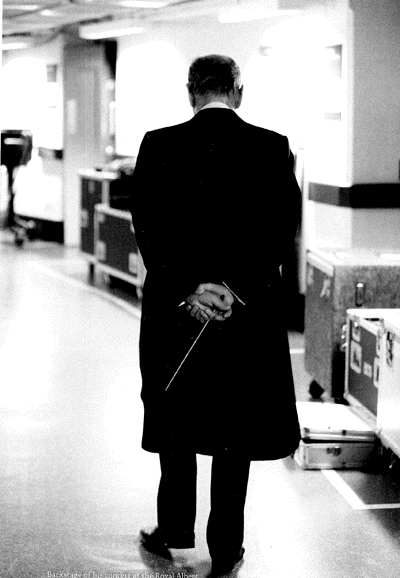
Morricone waits backstage at a 2010 concert of his work at the Royal Albert Hall in London. Photo by Roberto Musacchio.












